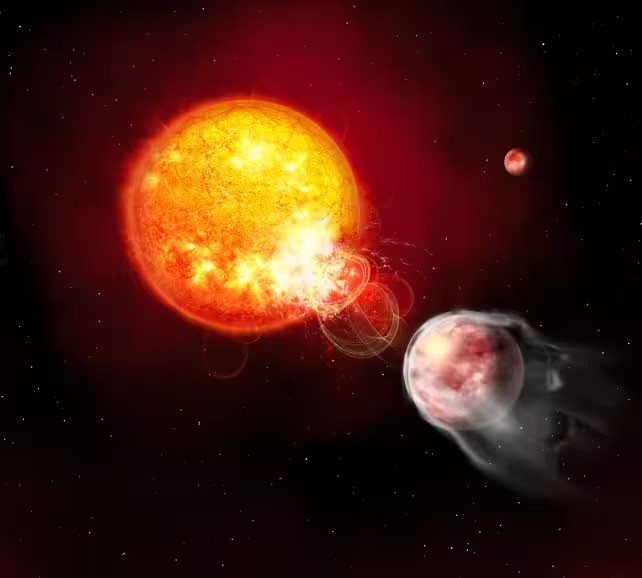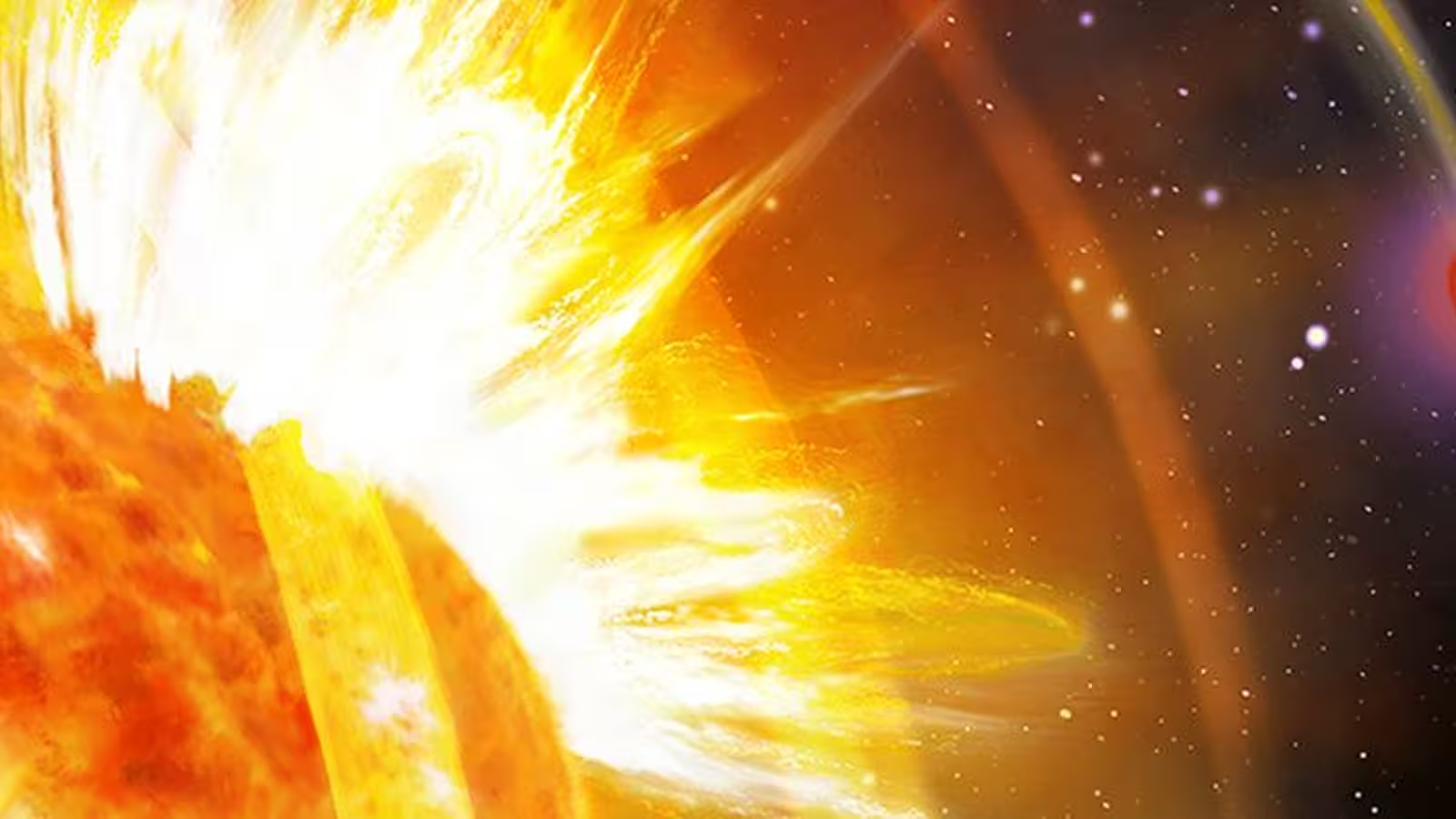5 Minutes
Astronomers Observe Unprecedented Star-Planet Magnetic Interaction
Recent astronomical research has unveiled a dramatic cosmic phenomenon: a giant exoplanet is so closely bound to its host star that it is actively triggering the star to unleash powerful solar flares. This discovery sheds new light on magnetic interactions within planetary systems and challenges established notions about the independence of stars from their orbiting planets.
HIP 67522, a sun-like star located approximately 408 light-years from Earth, and its companion exoplanet HIP 67522b, form the core of this groundbreaking study. The system is remarkably young—just 17 million years old, a mere infancy in stellar terms. What sets HIP 67522b apart is its extreme proximity to its star and its unique physical characteristics: although it is as wide as Jupiter, it contains only about 5% of Jupiter's mass. The planet completes a rapid orbit around its star every 6.95 days, placing it in a harsh and dynamic radiation environment.
How Planetary Magnetism Provokes Stellar Eruptions
Researchers led by astrophysicist Ekaterina Ilin from the Netherlands Institute for Radio Astronomy have observed that HIP 67522b does more than just passively endure the star’s radiation. Instead, the exoplanet's own magnetic field appears to interact dynamically with the star’s extensive magnetic field. As the planet races around its star, it periodically induces powerful magnetic waves that transfer energy along the star's magnetic field lines, much like the snap of a whip. This process regularly sparks highly energetic flares directed toward the planet itself.
Over five years of observations, the research team cataloged 15 distinctive flares erupting from the star in the direction of HIP 67522b. These stellar outbursts are not merely powerful—they are highly focused, occurring at precise intervals when the planet is in position to transfer the magnetic energy. As Ilin explains, "We've found the first clear evidence of magnetic star-planet interaction, where a planet triggers energetic flares on its host star. What's particularly exciting is that this interaction has persisted for at least three years, allowing us to study it in detail."

Consequences for the Exoplanet: Rapid Atmospheric Loss
The intense flares are not without profound consequences. HIP 67522b endures six times the radiation it would otherwise receive if not for its disruptive presence. The planet’s atmosphere, described as puffy and tenuous, is especially vulnerable. The continuous battering by high-energy flares heats the atmosphere, causing it to dissipate into space at an accelerated rate. Scientists estimate that, should this process continue, HIP 67522b could shrink to a Neptune-sized planet in as little as 100 million years.
This discovery not only challenges assumptions about the passive role of planets in stellar environments but also adds crucial data to the emerging field of star-planet magnetic interactions. Previously, it was widely believed that stars, due to their immense size and power, were largely immune to the influence of their much smaller planets. However, accumulating evidence—including this study—suggests that planets, especially those in close orbits, can significantly affect their stellar hosts.
The Path Forward: Searching for Similar Phenomena in the Milky Way
Looking ahead, scientists hope to identify more examples of such magnetic star-planet interactions across our galaxy. By locating and analyzing similar planetary systems, astronomers aim to deepen our understanding of how these magnetic exchanges shape the evolution of both stars and their planets. The continued study of systems like HIP 67522 and HIP 67522b represents a frontier in exoplanet science, offering new insights into the volatile dynamics that can emerge in the universe.
Conclusion
The discovery of HIP 67522b’s role in provoking powerful flares on its host star marks a significant advance in our comprehension of star-planet relationships. Not only does this finding reveal that close-orbiting exoplanets can drive magnetic disturbances with dramatic consequences, but it also opens up fresh avenues for exploring the complexities of planetary and stellar evolution. As researchers continue to explore the cosmic dance between planets and their stars, more surprises are undoubtedly on the horizon, promising to reshape our view of planetary systems throughout the Milky Way.



Comments